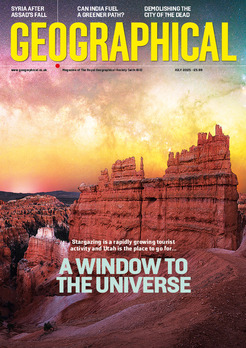
Caroline Dodds Pennock breaks the stereotype that Native Americans were passive, in this impressive retelling of the relationship between them and the Europeans
Review by Olivia Edward
In this revisionist retelling of the relationship between Europeans and the Indigenous people whose homelands they were once mistakenly thought to have ‘discovered’, Caroline Dodds Pennock dispels the notion that Native Americans were passive, static recipients and instead recasts them as dynamic actors in their story, instigating commercial and diplomatic relations, and as curious and interested in the Europeans as the Europeans were in them.
A lack of documentary resources remains problematic. ‘It’s tempting to say that the voices of Indigenous travellers have been “lost”,’ writes Dodds Pennock, ‘but in reality, they were rarely recorded (at least in alphabetical writing) in the first place.’ As a result, the understanding of non-European existences is at best obscured and, at worst, biased and harmful: ‘Indigenous peoples in Europe lived a refracted reality: whatever their purpose or intent, they found themselves gazed upon by Europeans whose enquiring eye not only observed, but also transformed and implicitly limited them, framing them within European assumptions.’
In her attempt to rebalance the narrative, Dodds Pennock seeks out overlooked sources of information, or else reads more widely known texts against the grain. In Nauhaus folk songs, recorded in the 16th century, a glimpse of the indigenous experience of transatlantic crossings makes its way through: ‘The wind now rises, howling and moaning. Thus does the ocean seethe and the ship creaks its way along.’ While Maungwudaus, the Mississuaga Chippewa chief, quipped of his travels as part of a travelling show: ‘In France, the ladies were handsome but the gentlemen never shave their faces; this makes them look as if they had no mouths.’
Elsewhere, commonplace items are repatriated to their countries of origin – tomatoes to Mexico, potatoes to Peru. So much more remains untraceable and as Dodds Pennock herself notes, attempts to piece together an alternative and more truthful understanding of the great transatlantic exchange brings acute awareness of ‘how heavily our picture of the past is shaped by the sources we have available’.
But this is an impressive and consequential act of research and interpretation that consistently acknowledges the ‘profound and ongoing … fissure caused to indigenous identities by colonisation, enslavement, violence and displacement’.




